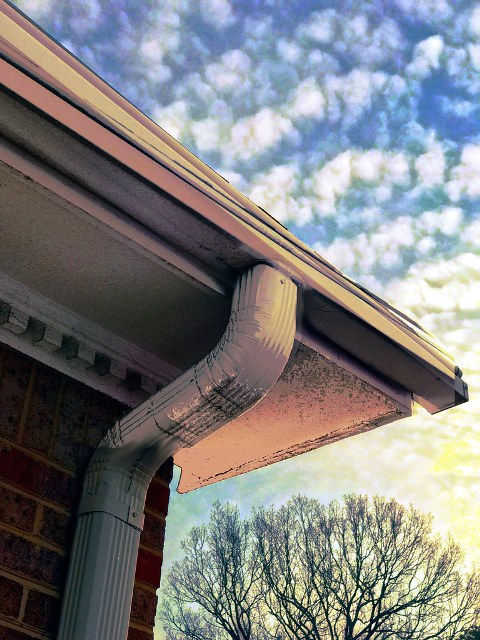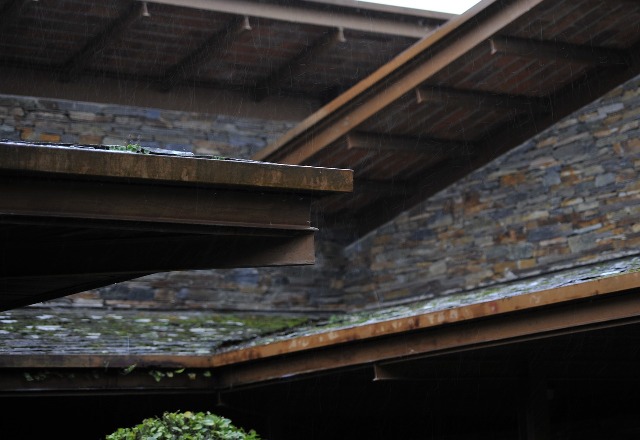How do you recognize the difference between an eavestrough and a gutter, and where do you install them? In this post, you will get to know the differences between these two essential elements of your roof.
Before looking at the differences between eavestroughs and gutters, let’s look at what they have in common. While it is generally known what gutters look alike, the eavestroughs are less well known.
What is a gutter?

A gutter is a place through which water flows in drops. It is through the gutters that rain pours off the roof when it rains. It often takes the form of a half-cylindrical channel, open at the top and suspended from hooks. In Toronto, you will see them very quickly if you look at the houses in the surrounding area. A gutter is also a pipe designed to collect water to be discharged via downspouts or disgorgers, depending on the house type. It should be remembered from the outset that it serves the same purpose as the eavestrough. However, unlike the gutter, the eavestrough is only visible when you climb on the roof.
Elements of the water evacuation system

Without eavestroughs, gutters, siphons, filters, pipes…, rainwater cannot escape. All of them are essential elements of a roof in good condition. They have openings to evacuate rain or help snowmelt more quickly in case of storms.
Criteria to make the difference between eavestrough and gutter
To what extent are the two designations confused in everyday language? Here are some answers!
Major clue: look at the location!
The main difference between gutter and eavestrough is the location of each of them on the roof. The first one is suspended at the end of the slope of the roof.
What is eavestrough?

The eavestrough, on the other hand, is masonry and integrated into the body of the roof. It is supported by cement, stone, wood… or any other building material. You can see it if you climb on the top with a ladder.
Note: the gutter is more fragile than the eavestrough, which can support a man’s weight.
The eavestrough, is it the ancestor of the gutter?
In classical architecture, buildings had gutters. This is still the case for many monuments, for obvious aesthetic reasons. More and more, in modern facilities, the installation of gutters is favoured over eavestroughs. Several reasons justify this transition from one to the other:
– the installation of gutter is easier because it does not require a particular layout on the roof;
– maintenance is easier because the gutters are often lower than the eavestroughs. You can remove stuck leaves and snow in less time;
– it is easy to spot if a gutter is punctured or broken. On the other hand, it is necessary to go up on the roof to examine the condition of the eavestrough.
Where do you find eavestroughs?

Today, eavestroughs are mostly found on :
– Old buildings, such as farmhouses and longhouses;
– recent houses with a more complex architecture and a hip roof;
– industrial buildings with very long roofs;
– as a whole, collective rather than individual buildings.
On the other hand, the majority of townhouses and pavilions now have gutters.
Attention!
If you talk to a professional gutter installer, he or she may use the more technical term “eavestrough” to refer to a gutter. However, in common parlance, there is a tendency to use the word “gutter” to refer to all the roof drainage pipes. The two terms are often used interchangeably to refer to the rainwater drainage system on the roof.
Gutters and eavestroughs complement each other.
On multi-sided roofs, it is quite possible to find both gutters and eavestroughs. If you live in a mountainous or high precipitation area, this should not be overlooked when designing your home. You can contact Downtown Roofing for advice and a quote.
The different types of gutters and eavestroughs
To help you differentiate between them, consider the main types of gutters and eavestroughs currently on the market. These can be of various shapes and sizes, each with its advantages and peculiarities, as shown in the tables below.
Two types of eavestroughs
| Type | Features |
| English style eavestrough | It sits on the roof’s contours and is built into an enclosure, often made of concrete, sometimes wood. |
| Eavestrough on a slope or on two slopes | It is located between two slopes of the roof, is particularly popular in the case of complicated constructions. |
Two types of gutters
| Type | Characteristics | Advantages |
| Hanging gutter | It usually takes the shape of a semi-circle, it is fixed with hooks under the roof slope. This is the most common type of gutter today. | More economical, with large evacuation capacities. |
| Creeping gutter | It is fixed with hooks on the end of the roof. | It is less visible, and therefore privileged for aesthetic reasons. |
Note: For these two gutter variations, the shapes and construction materials are diverse. They can be cylindrical, square, and more.
Good to know: Eavestroughs are often more expensive than gutters.
Conclusion
To make the difference between eavestroughs and gutters, watch their location! The first one is not visible because it is integrated into the roof structure. The second, now the most popular, is often hung on hooks at the roof’s end. In both cases, their function is essential in the rainwater drainage system.



